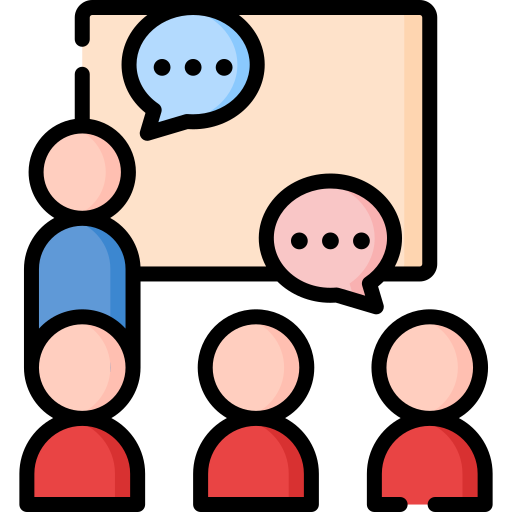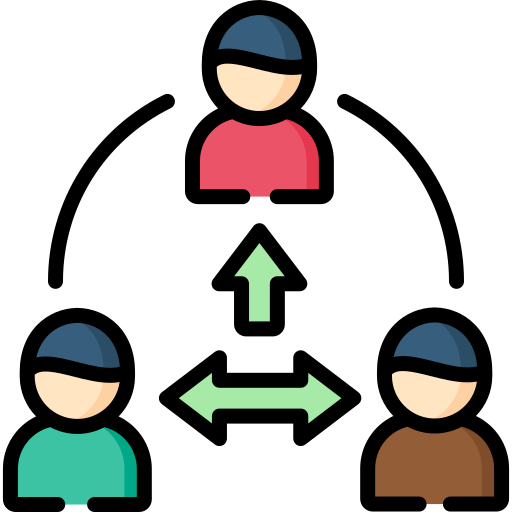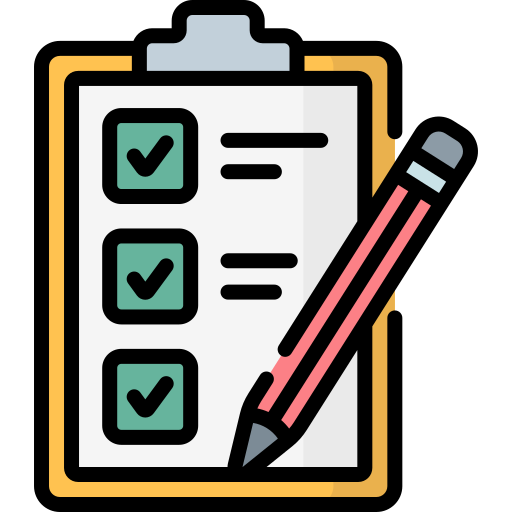Imagine this...
You're leading your first big project.
You've inspired the team, delegated tasks, set clear deadlines, and created a solid plan to evaluate progress.
Everything is on track, until... CONFLICT!
 Image source: Pixabay
Image source: Pixabay
Whether it's clashing ideas or mismatched communication styles, conflict has the power to derail even the grandest of plans.
But here's the thing — as a team leader, you can help navigatethese tricky times. This doesn't just help you resolve the issue in the moment; it can also lay down the foundation for stronger team dynamics in the long run.
Sharpen your leadership skills by learning about 5 key conflict resolution styles and strategies.
Why Conflict Resolution?
Team-based organizational structures are more common than ever.
And what happens when you bring a group of driven, talented, and passionate people to work on something together?
You get a diverse collection of personalities, cultures, opinions, and working styles. It's only natural for disagreements to arise in such a varied team.
 Image source: Pixabay
Image source: Pixabay
Conflict resolution at work aims to:
find solutions to disagreements,
reduce friction andnegative factors that lead to conflict,
strengthen relationships between team members, and
lead to more efficient teams and successful projects.
Essential Skills
As a leader, your reaction to conflict has the power to shift outcomes and inspire change. Here are some top skills to add to your conflict resolution toolkit:

1. Active Listening and Empathy
Lead with empathy, avoid assumptions, and stay open to different perspectives.
Practice active listening by asking clarifying questions to help you understand the situation.
Follow up to address lingering concerns and show your support.

2. Professionalism
Don't take it personally; team conflict doesn't mean you've failed as a leader.
Model respect and professional communication in your interactions.
Stay solution-oriented and promote a culture of growth

3. Prevention and Early Intervention
Act early and step in to resolve issues before they snowball.
Prevention is better than cure; ensure that your team is equipped with communication skills training.
Review guidelines from your workplace HR department or your university's code of conduct.

4. Bring in a Mediator
Sometimes it's useful to have a neutral third party help facilitate the resolution.
In heated situations, consider asking an HR representative to act as a mediator.
Lean on a mentor or senior colleague for support and guidance.

5. Create and Follow Protocols
Rest your approach in your leadership values, the team's strengths, and the culture you want to foster.
Ask your team to help you co-create a strategy to resolve conflict.
Review and follow the guidelines laid out by your workplace or university.
Learn 3 magic questions that help leaders diffuse high-tension conflict from this TikTok video by @jobdoctortessa.
Quiz
Julissa is leading the new project at her university research lab. She wants to be ready in case conflict comes up. How can she build her conflict resolution skills?
Choosing the Right Approach
The Thomas-Kilmann Conflict Model outlines 5 styles or approaches that are commonly seen when faced with conflict.

1. Collaborating Style
Aims to find the common ground between differing perspectives.
Also called the "win-win" style
Valuable to foster team spirit and build strong workplace relationships
Example:
Before starting a project, you collectively brainstorm a communication and conflict management strategy with the team. You discuss the strengths and working styles of each team member. Together, you find possible roadblocks and co-create solutions.

2. Competing Style
Uses authority to reject dialogue or compromise
Here, you're "playing the power card"
Useful in times of limited time or resource availability
Example:
It's the final day before a big presentation, and the design team disagrees about the visual directions to take. You need the deck to be completed ASAP for a practice run-through. As a team leader, you make the final call for the sake of time.

3. Compromising Style
All parties let go of some desires to agree on a common solution
In some situations, it may be a "lose-lose" situation
Useful when a middle ground is valuable and possible
Example:
Your team disagrees on the venue for a networking gathering. While some prefer a professional atmosphere at a hotel, others are leaning towards a friendly setting at a popular restaurant. You lead a conversation to discuss both options. The team finally decides on a cafe venue providing a formal yet friendly environment for the event.

4. Accommodating Style
Prioritizing one team member's needs over the other needs of the team or organization
Here, you're aimed at promoting equity or "levelling the playing field"
Used when safeguarding someone's health and safety
Example:
A team member tells you they're facing a personal health situation that's affecting their work. You empathize with them and temporarily reduce their workload, redistributing tasks to yourself and other team members.

5. Avoiding Style
Reduces conflict by ignoring it or removing conflicted parties from the equation
May align with the strategy of "choosing your battles
May prove useful if a situation requires a quick, short term solution or if it avoids conflict without other setbacks
Example:
Two team members who worked closely on a previous project faced many disagreements, affecting the team's workflow and causing tensions to run high. For an upcoming high-stakes project, you find that you can easily restructure the working pairs to avoid the same conflict. You decide to revisit the issue when you all have the bandwidth to reflect on the issue constructively.
Quiz: Put Your Skills to the Test!
Ryan is the new Sales Team Lead at the Michael Scott Paper Company. He's stumped by a conflicting situation at work.
 The Situation
The Situation
Alicia and Farah are co-workers Ryan's sales team.
Alicia has been excitedly preparing for a big meeting with a big client. Two hours before the meeting, she decides to step out for lunch and have some time alone to practice her pitch.
The client ends up arriving early, and Farah steps in to cover for Alicia and run the meeting. It goes well, and the meeting ends with the client asking Farah to manage their account.
When Alicia returns and finds out what happened, she’s visibly upset but says nothing. Farah seems to notice this, but doesn't bring it up.
Ryan's Challenge
Ryan can sense the tension. He wants his team to stay collaborative and communicative, even in the face of conflict.
What should he do?
 Ignore the tension between the two. Intervening will only make the situation worse; it'll sort itself out soon enough!
Ignore the tension between the two. Intervening will only make the situation worse; it'll sort itself out soon enough!
 Tell Farah to hand over the client to Alicia. Alicia's anger sometimes gets the best of her; nobody needs a blow up!
Tell Farah to hand over the client to Alicia. Alicia's anger sometimes gets the best of her; nobody needs a blow up!
 Set up a meeting with both of them to clear the air, hear each other's perspectives, and find a solution together.
Set up a meeting with both of them to clear the air, hear each other's perspectives, and find a solution together.
 Make the final decision that both Alicia and Farah will share responsibility for the account and work together.
Make the final decision that both Alicia and Farah will share responsibility for the account and work together.
Quiz
Select the best option:
Take Action
Navigating team conflict as a new leader can feel overwhelming. The key lies in reframing conflict as a chance to improve team dynamics, fostering collaboration and trust.

Use the following ideas to help you reflect and develop your strengths as a leader:
Your feedback matters to us.
This Byte helped me better understand the topic.
